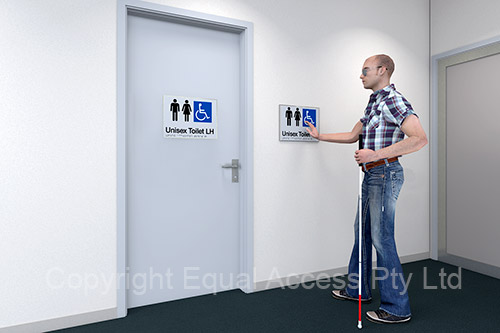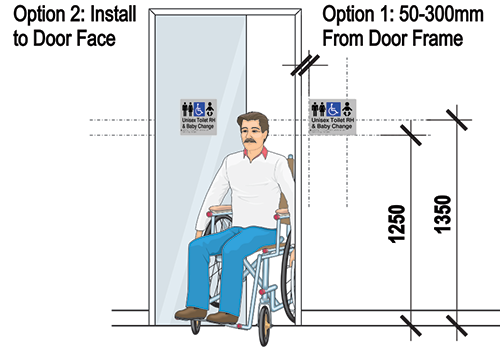
Figure 1
Accessible wayfinding signage provides great benefit for all visitors and members of the public. When information is provided in various formats for use by people of all abilities everyone can safely move to their desired location.
All signs should be provided as ‘accessible signs’ at a reachable height with Braille and tactile characters. When high-level signage is provided, this must be complemented with accessible alternatives.
The International Symbol of Access also known as the (International) Wheelchair Symbol, consists of a blue square overlaid in white with a stylized image of a wheelchair. It is maintained as an international standard in ISO 7001 and within the Australian Standards.

Figure 2
The following sketch shows the difference between LH (Left hand transfer) & RH (Right hand transfer)